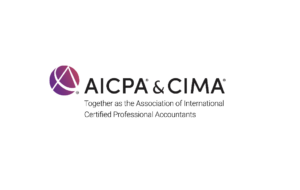Taurus Capital CEO Elad Smadja says CFOs need to be solutions-driven and responsive in how they make decisions.
Today’s CFOs face a diverse and complex range of challenges and priorities. These include ever-present liquidity demands, increased compliance and regulatory issues, the need to optimise expense budgets, and the constant pressure to do more with less. Consequently, CFOs need to be solutions-driven and responsive in how they make decisions.
Litigation finance (also called litigation funding) is the practice where a third party unrelated to a lawsuit provides capital on a non-recourse (no-win-no-fee) basis to a plaintiff involved in litigation, in return for a portion of any financial recovery should the case be successful.
The capital provided covers the costs of litigation including attorney and council fees, expert witnesses and court/arbitration expenses. This frees up limited working capital, which can then be allocated to the core operations of the business.
It is for this reason that there has been a shift in thinking around which companies should make use of litigation funding. There is a strong business case for companies with a healthy balance sheet to also use litigation funding, not only companies that don’t have the funds to litigate.
Imagine your firm has been wronged and your trusted external law firm advises that you have a strong claim likely to yield a significant financial upside. The budget to run the claim is expected to be R10 million (plus the risk of a cost order should you lose). The lawyers obviously cannot guarantee a win, but are also not prepared to lock in a fixed fee nor to work on a contingency-fee arrangement. While the opportunity for future income may be appealing, the risks of losing, the possibility of budget over-run, and the protruded nature of commercial litigation are all good reasons not to pursue an otherwise meritorious claim.
Let’s assume:
- The quantum of the claim is R200 million;
- Proceedings are expected to last three years at a total external cost of R10 million;
- Initial annual revenues are R200 million, growing by 4 percent a year;
- Operating margins of 6 percent are in the core business; and
- Opportunity cost in diverting capital to pursue the claim is 6 percent.
In this example, the above-the-line costs associated with pursuing the claim are recognised immediately as an expense, which negatively affects the operating profits in each year of litigation. Capital allocated to fund the claim cannot be used for core business activities, thereby further reducing profitability by the opportunity cost.
Pursuing the claim not only distorts the performance of the core business, but also depresses the market valuation of the company by a multiple of the costs incurred. In this example, the company valuation may be reduced by as much as 30 percent on a price earnings (P/E) multiple basis.
If the claim is successful, the proceeds are recognised as a once-off below-the-line gain and will likely only impact the perceived valuation of the company on the basis of the injected additional cash into the business. In short, these are impacts that a prudent CFO will want to avoid. Using the same example, we now consider the accounting impact on the company of financing the new claim with non-recourse funding provided by a third-party litigation funder.
In this scenario, the company no longer bears the above-the-line legal costs of pursuing the claim. The operating profit reported in each year is reflective only of the core performance of the business, likely boosting its valuation.
As with example one, the future benefits of a successful claim offer no benefit to the profitability of the company in years one and two. If the claim is successful, the company recognises a reduced once-off gain, but given the preservation of profitability during years one and two, a reduced net claim receipt will have a limited impact on the change in the valuation of the business.
Although the company gives up a portion of its eventual (but uncertain) gain as a premium to its funder, the funding arrangement means that there has been zero cost incurred in generating that gain. The in-house legal team has therefore used funding to generate profit, thereby transforming a cost-centre into a profit-centre.
Unfortunately, in legal matters, success is not always guaranteed. Similar to insurance, litigation funding effectively shifts the risk of a loss from the claimant to a third party.
In summary, potential legal claims are an often-overlooked company asset. Litigation funding provides a powerful arrow in the quiver for the modern-day CFO to pursue meritorious claims and extract value without diverting key resources from the core business.










